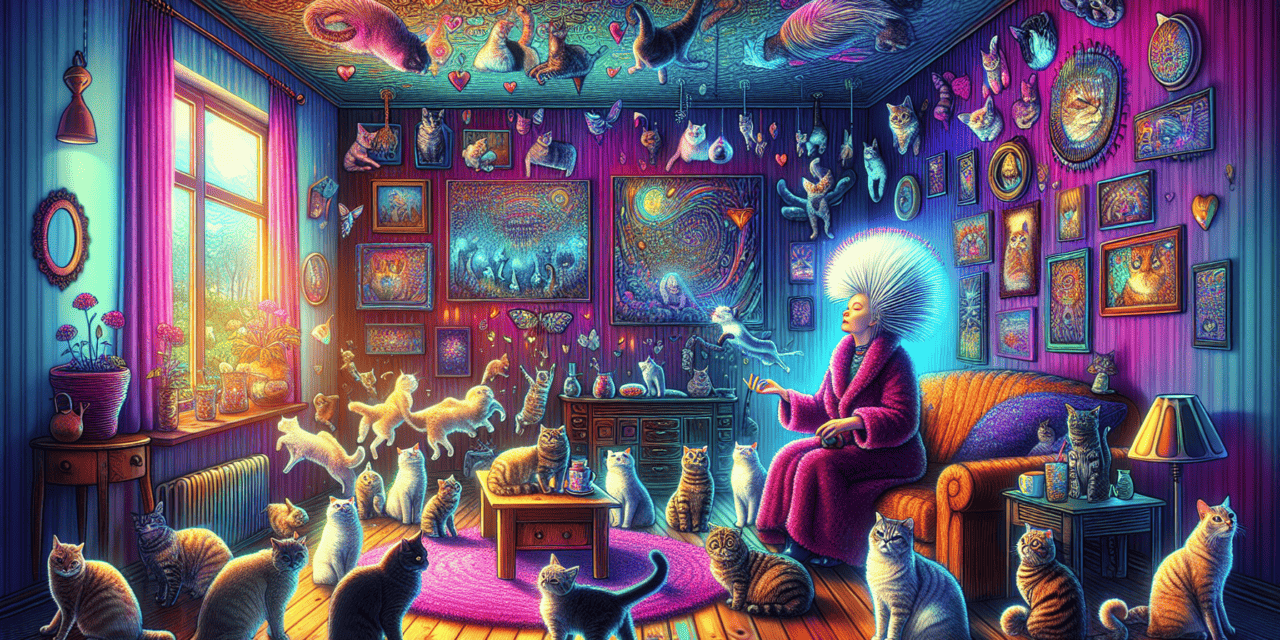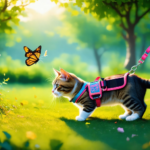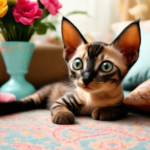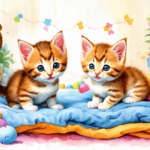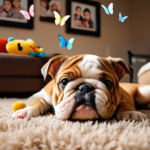Welcome to our exploration of the Crazy Cat Lady phenomenon, a cultural stereotype that has evolved into a beloved meme and a significant part of pop culture. In this article, we will decode the Crazy Cat Lady Syndrome, delving into its psychological underpinnings and societal implications. We will also take a closer look at the iconic Simpsons’ Crazy Cat Lady, a character that has left an indelible mark on television history. As we navigate through the various facets of this intriguing topic, we will answer essential questions such as, “What is the Crazy Cat Lady syndrome?” and “How many cats does one need to be considered a Crazy Cat Lady?” Additionally, we will discuss the health implications associated with cat ownership, including the toxoplasmosis risk, and explore the fun side of being a cat lover through popular cat lady memes and costumes. Join us as we unravel the layers of this fascinating cultural icon and what it truly means to be a cat lady.
What is the Crazy Cat Lady syndrome?
Understanding the Crazy Cat Lady Syndrome
The term Crazy Cat Lady syndrome refers to a phenomenon often associated with the compulsive hoarding of cats, which can be a manifestation of obsessive-compulsive disorder (OCD). This stereotype has been popularized in media, but it is important to understand the underlying psychological and biological factors involved.
- Definition and Symptoms: Crazy Cat Lady syndrome is characterized by the excessive accumulation of cats, often leading to unsanitary living conditions and neglect of personal health. Individuals may experience emotional attachment to their pets that can interfere with daily functioning. Symptoms may include anxiety, social withdrawal, and difficulty in managing relationships outside of their feline companions.
- Psychological Links: Research indicates that individuals with this syndrome may suffer from underlying mental health issues, including OCD, depression, and anxiety disorders. The compulsive behavior can serve as a coping mechanism for emotional distress (Fitzgerald et al., 2020).
- Toxoplasma gondii Connection: Scientific studies have suggested a link between the parasite Toxoplasma gondii, commonly found in cat feces, and various mental health disorders. This parasite has been associated with changes in behavior, potentially increasing impulsivity and risk-taking (Flegr et al., 2014). While not all cat owners are affected, the presence of T. gondii in the environment can have implications for mental health, particularly in those predisposed to psychological conditions.
- Social Perception and Stigma: The stereotype of the “crazy cat lady” can perpetuate stigma against individuals who hoard animals. It is crucial to approach this topic with sensitivity and understanding, recognizing that these behaviors often stem from deeper psychological issues rather than mere eccentricity.
- Support and Treatment: Individuals exhibiting signs of Crazy Cat Lady syndrome may benefit from professional help, including therapy and support groups. Cognitive-behavioral therapy (CBT) has shown effectiveness in treating OCD and related disorders (Hofmann et al., 2012). Community resources and animal welfare organizations can provide assistance in managing pet populations and improving living conditions.
In conclusion, Crazy Cat Lady syndrome is a complex issue that intertwines mental health, societal perceptions, and biological factors. Understanding the nuances of this syndrome can foster compassion and encourage effective treatment options for those affected.
The Psychology Behind the Crazy Cat Lady Phenomenon
The psychology behind the Crazy Cat Lady phenomenon is multifaceted, involving emotional, social, and biological dimensions. Individuals often develop a profound bond with their cats, which can serve as a source of comfort and companionship. However, this attachment can sometimes escalate into unhealthy behaviors.
- Emotional Attachment: Many cat ladies find solace in their feline friends, especially during times of stress or loneliness. This emotional bond can lead to an overwhelming desire to care for and protect their pets, sometimes resulting in the accumulation of multiple cats.
- Social Isolation: The stereotype often highlights social withdrawal, where individuals may prefer the company of their cats over human interaction. This isolation can exacerbate feelings of loneliness and depression, creating a cycle that reinforces the behavior.
- Biological Factors: As mentioned earlier, the presence of Toxoplasma gondii may influence behavior and mental health. Understanding these biological connections can help in addressing the psychological aspects of the syndrome.
Recognizing the psychological underpinnings of the Crazy Cat Lady phenomenon is essential for fostering empathy and providing appropriate support for those affected.
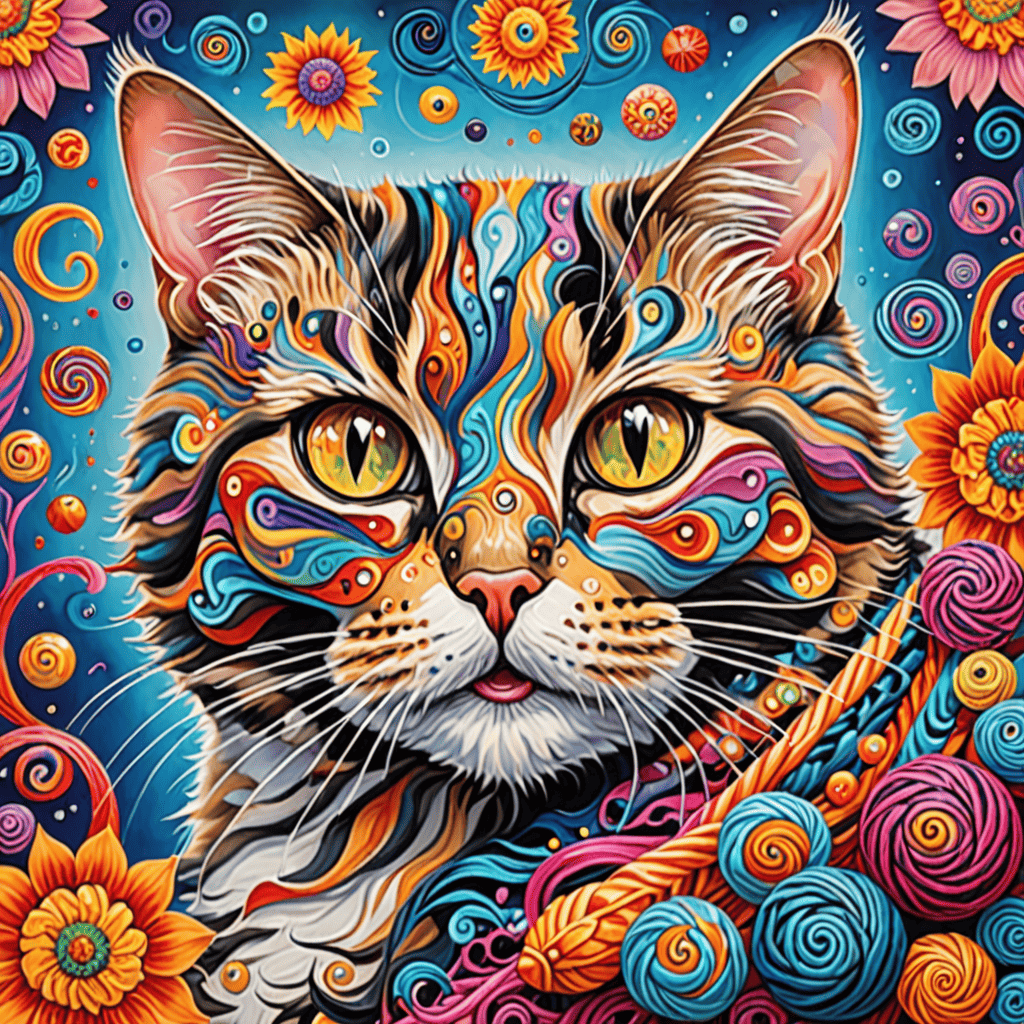
Who is the Crazy Cat Lady character?
The Crazy Cat Lady character is primarily represented by Eleanor Abernathy, a recurring figure in the animated television series The Simpsons. She embodies the stereotype of a reclusive, eccentric woman obsessed with cats, often depicted as living in disarray surrounded by numerous felines. Eleanor is known for her distinctive behavior, which includes speaking in gibberish and throwing her cats at unsuspecting passersby, highlighting her quirky and chaotic nature.
This character serves as a humorous commentary on societal perceptions of single women and pet ownership, often being portrayed as a figure of ridicule. The stereotype has permeated popular culture, leading to the widespread use of the term “cat lady” to describe women who are perceived to have an excessive attachment to their cats. Eleanor Abernathy’s character can be seen as a reflection of deeper themes in The Simpsons, such as loneliness, mental health, and societal expectations. While the portrayal is exaggerated for comedic effect, it raises questions about the stigmatization of individuals who deviate from societal norms regarding relationships and pet ownership.
The Simpsons Crazy Cat Lady: A Cultural Icon
Eleanor Abernathy, the Crazy Cat Lady from The Simpsons, has become a cultural icon, representing the archetype of the “crazy cat lady.” Her character is often used to explore themes of isolation and the societal pressures faced by women, particularly those who choose to remain single or prioritize their pets over traditional relationships. The portrayal of the Crazy Cat Lady has sparked discussions about the stigma surrounding pet ownership and the misconceptions about women who love their cats.
As a cultural phenomenon, the character has inspired various merchandise, including cat lady boxes and cat lady box reviews, which celebrate the joys of being a cat owner. This trend reflects a shift in how society views cat ladies, moving from ridicule to appreciation for their unique lifestyle choices.
Analyzing the Impact of the Simpson Cat Lady on Pop Culture
The impact of the Simpson Cat Lady on pop culture is significant, as she has influenced how society perceives cat ownership and the women who embrace it. The character has inspired countless cat lady memes and humorous portrayals in various media, contributing to the normalization of the “crazy cat lady” stereotype. While initially intended as a comedic figure, Eleanor Abernathy has evolved into a symbol of empowerment for many cat lovers.
Moreover, the character’s quirks and eccentricities have led to the creation of crazy cat lady costumes and themed events, allowing fans to celebrate their love for cats in a fun and engaging way. This cultural shift highlights the growing acceptance of diverse lifestyles and the recognition that being a cat lady is not just a stereotype, but a legitimate expression of love and companionship.
What Does Cat Lady Mean in Slang?
The Evolution of the Term “Cat Lady”
The term “cat lady” is a slang expression that typically refers to a woman who owns multiple cats, often living alone and perceived as eccentric or socially awkward. This stereotype has evolved over time, and while it originally carried a negative connotation, it has increasingly been embraced by many as a badge of honor among cat enthusiasts. A “cat lady” is often defined as a woman who has a significant number of cats, typically more than the average pet owner. The phrase can imply that she prioritizes her cats over social relationships or traditional family structures.
Historically, the image of the “cat lady” has been popularized in media and pop culture, often depicting her as quirky or reclusive. However, this image is shifting as more women proudly identify with the term, celebrating their love for cats and animal companionship. Social media platforms are filled with accounts dedicated to cat ownership, showcasing the joys and benefits of having feline companions. This shift reflects a broader acceptance of diverse lifestyles and the recognition of pets as integral parts of family life.
Crazy Cat Lady Meaning: Beyond the Stereotype
In contemporary society, the term “crazy cat lady” is being reclaimed by many as a positive identity. Studies suggest that pet ownership, including having multiple cats, can provide emotional support and improve mental well-being. According to the American Psychological Association, pets can help reduce feelings of loneliness and provide companionship, which may explain why some women choose to embrace the “cat lady” identity.
This modern interpretation highlights the importance of community among cat lovers. While the stereotype may have once been used pejoratively, it now represents a vibrant community of individuals who find joy and fulfillment in their relationships with their pets. Embracing this identity can foster a sense of belonging and connection among like-minded individuals, further enhancing the positive aspects of being a “crazy cat lady.” For those interested in exploring this lifestyle, resources such as cat lady subscription boxes offer curated items that celebrate the joys of cat ownership.
How Many Cats Are Considered Crazy Cat Lady?
The term “Crazy Cat Lady” is often used colloquially to describe individuals, typically women, who have a strong affinity for cats. While there is no strict definition, many sources suggest that owning three or more cats may classify someone as a “Crazy Cat Lady.” However, this label can also apply to anyone who passionately identifies with their love for cats, regardless of the number they own.
Defining the Threshold: How Many Cats Make a Crazy Cat Lady?
Cultural perception plays a significant role in defining what it means to be a Crazy Cat Lady. The stereotype has evolved, and it is increasingly recognized that cat ownership is not solely defined by quantity. Many people, regardless of gender, may embrace the title with pride, often referring to themselves as “crazy cat people” even with just one cat. This shift in perception highlights the emotional connection and community that cat lovers share.
Research indicates that pet ownership, including cats, can provide significant emotional benefits. A study published in the Journal of Personality and Social Psychology found that pet owners often experience lower levels of stress and increased feelings of companionship. This emotional bond is what truly defines a Crazy Cat Lady, rather than just the number of cats owned.
Crazy Cat Ladies: A Look at Cat Ownership Statistics
According to recent surveys, the average cat owner has about two cats, but many self-identified Crazy Cat Ladies proudly own three or more. The rise of social media has fostered communities where cat lovers share their experiences, further blurring the lines of what it means to be a Crazy Cat Lady. Platforms like Instagram and TikTok have popularized the term, showcasing the joy and humor that comes with cat ownership.
Ultimately, the number of cats that qualifies someone as a Crazy Cat Lady is subjective. Whether you have one cat or several, what matters most is the love and care you provide for your feline companions. Embracing your identity as a cat lover, regardless of societal labels, can lead to a fulfilling and joyful life. For more insights into the joys of cat ownership, check out our article on Cat Lady Box Reviews and discover how subscription boxes can enhance your experience as a cat lover.
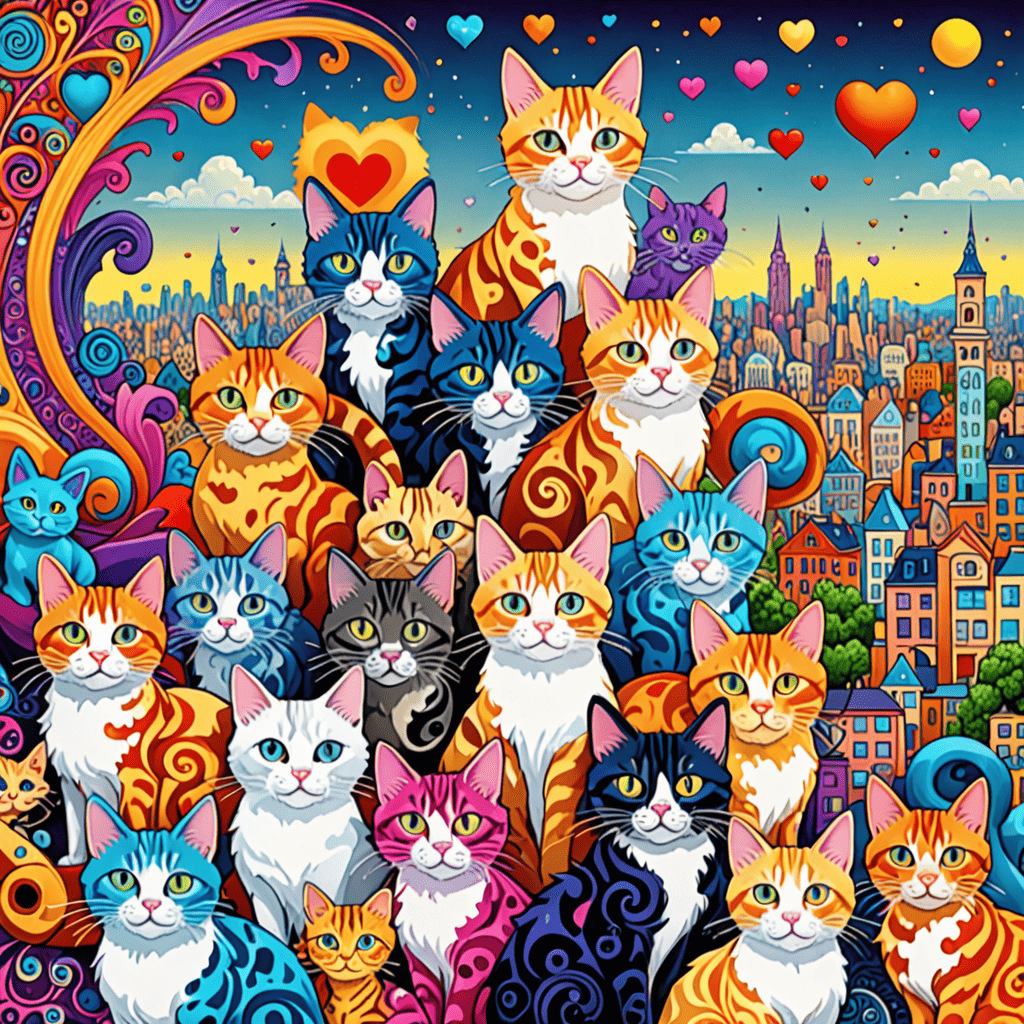
What kills toxoplasmosis in humans?
Toxoplasmosis, often referred to as the “crazy cat lady disease,” is caused by the parasite Toxoplasma gondii. Understanding how to effectively treat and prevent this infection is crucial for cat owners, especially those who identify with the crazy cat lady stereotype. Here are the primary treatment options available:
Treatment Options:
- Pyrimethamine and Sulfadiazine: These are the primary medications used to target and suppress the active stage of the Toxoplasma gondii parasite. Pyrimethamine inhibits folic acid synthesis, while sulfadiazine acts as a sulfonamide antibiotic, enhancing the efficacy of the treatment (American Academy of Pediatrics, 2021).
- Folinic Acid (Leucovorin): Often prescribed alongside pyrimethamine, folinic acid helps to mitigate potential side effects such as bone marrow suppression, ensuring a safer treatment course (CDC, 2023).
- Alternative Medications: Depending on the severity of the infection and the patient’s condition, other medications may be utilized, including:
- Trimethoprim-sulfamethoxazole: Effective for patients who cannot tolerate pyrimethamine.
- Clindamycin: Often used for those allergic to sulfa drugs.
- Atovaquone: An option for patients with severe disease or those who are immunocompromised (National Institutes of Health, 2022).
- Spiramycin: This antibiotic is used prophylactically in pregnant women to prevent the transmission of the parasite to the fetus, significantly reducing the risk of congenital toxoplasmosis (Drugs.com, 2023).
When Treatment is Necessary:
- Healthy Individuals: Most healthy individuals with toxoplasmosis do not require treatment, as their immune systems can often control the infection effectively.
- Pregnant Women: Treatment is crucial for pregnant women who contract toxoplasmosis to minimize the risk of congenital transmission to their babies (World Health Organization, 2022).
- Immunocompromised Individuals: Those with weakened immune systems, such as HIV/AIDS patients or organ transplant recipients, are at a higher risk for severe complications and typically require aggressive treatment (Mayo Clinic, 2023).
- Infants: Infants diagnosed with congenital toxoplasmosis are usually treated with a combination of medications for at least a year to manage the infection and prevent complications (American Academy of Pediatrics, 2021).
Important Considerations:
- No Cure: It is important to note that there is currently no definitive cure for toxoplasmosis; the parasite can remain dormant in the body even after treatment (CDC, 2023).
- Prevention: Preventative measures are crucial in reducing the risk of infection. This includes practicing good hygiene, such as washing hands thoroughly after handling raw meat or gardening, and avoiding consumption of raw or undercooked meat (CDC, 2023).
- Ocular Toxoplasmosis: If the infection affects the eyes, treatment may include anti-inflammatory steroids in addition to standard drug therapy to manage inflammation and prevent vision loss (National Eye Institute, 2022).
Prevention and Treatment of Toxoplasmosis in Cat Owners
For those who embrace the crazy cat lady lifestyle, understanding how to prevent toxoplasmosis is vital. Here are some effective strategies:
- Regular Vet Check-ups: Ensure your cats are regularly checked for parasites and are up to date on vaccinations.
- Safe Litter Box Practices: Always wear gloves when handling cat litter and wash your hands thoroughly afterward. Consider using a covered litter box to minimize exposure.
- Food Safety: Avoid feeding your cats raw meat, as this can be a source of the parasite.
- Gardening Precautions: If you garden, wear gloves and wash your hands after handling soil, as it may be contaminated with cat feces.
By taking these precautions, you can enjoy your life as a crazy cat lady while minimizing the risk of toxoplasmosis.
How old is the cat lady who had plastic surgery?
The real-life crazy cat lady, Jocelyn Wildenstein, passed away at the age of 84. Known for her extensive plastic surgery, Wildenstein’s journey into the public eye began with her desire to enhance her appearance and align with her personal aesthetic goals. Her story serves as a poignant example of the complex relationship between beauty standards and self-identity, often igniting discussions about the societal pressures that drive individuals to undergo such transformations. Wildenstein’s life has been depicted in various media, showcasing both fascination and critique regarding the extremes of cosmetic surgery and the persona of the crazy cat lady.
The Real-Life Crazy Cat Lady: A Case Study
Jocelyn Wildenstein’s notoriety as the “cat lady” is not solely due to her appearance but also her deep connection to her feline companions. This relationship has often been romanticized in popular culture, leading to the stereotype of the crazy cat lady. Wildenstein owned numerous cats, which she adored and cared for, embodying the essence of a true cat lady. Her lifestyle and choices have influenced the perception of cat ownership, particularly among women, and have contributed to the ongoing dialogue about the crazy cat lady syndrome and its implications.
Media Representation of the Crazy Cat Lady: Age and Perception
The portrayal of the crazy cat lady in media, particularly through characters like the Simpsons crazy cat lady, has shaped public perception significantly. These representations often exaggerate traits associated with cat ownership, leading to a humorous yet sometimes negative stereotype. As we analyze these portrayals, it’s essential to recognize how they reflect societal attitudes towards aging, femininity, and pet ownership. The ASPCA and other organizations advocate for a more nuanced understanding of cat ladies, emphasizing the joy and companionship that cats bring to their owners, regardless of age.
Crazy Cat Lady Costumes and Memes
The phenomenon of the crazy cat lady has transcended mere stereotype, evolving into a vibrant cultural symbol that is celebrated through various forms of expression, including costumes and memes. This section delves into the creative world of crazy cat lady costumes and the rise of cat lady memes in social media, highlighting their significance in contemporary culture.
Exploring the Crazy Cat Lady Costume Trend
The crazy cat lady costume trend has gained popularity, especially around Halloween and themed events. These costumes often feature playful elements such as:
- Cat-themed accessories like ears, tails, and paw gloves.
- Outfits adorned with cat prints or images, showcasing a love for felines.
- Props like stuffed cats or cat-themed bags, enhancing the overall look.
Many enthusiasts embrace this trend not only for fun but also as a way to celebrate their identity as cat ladies. The costumes serve as a humorous nod to the stereotype while allowing individuals to express their affection for their furry companions. Retailers like Amazon and Party City offer a variety of options, catering to different tastes and budgets.
The Rise of Crazy Cat Lady Memes in Social Media
In recent years, crazy cat lady memes have exploded in popularity across platforms like Instagram, Facebook, and Twitter. These memes often depict the crazy cat lady archetype in humorous and relatable scenarios, resonating with fellow cat lovers. Common themes include:
- Funny captions about the joys and challenges of cat ownership.
- Images showcasing the quirky behavior of cats and their owners.
- Playful exaggerations of the crazy cat lady stereotype, often featuring multiple cats in amusing situations.
These memes not only entertain but also foster a sense of community among cat ladies and enthusiasts. They serve as a reminder that the love for cats is universal, transcending age and background. Websites like Meow Foundation and CatTime often share these memes, further promoting the joy of being a crazy cat lady.

